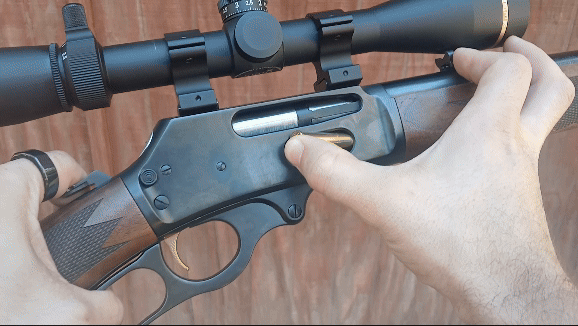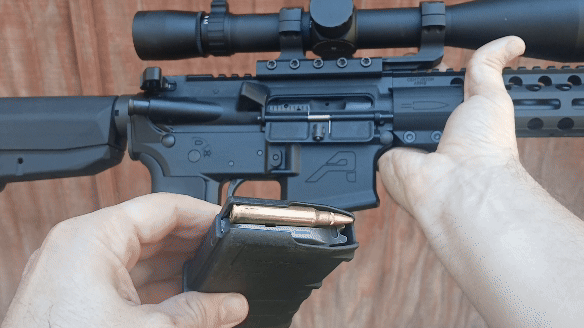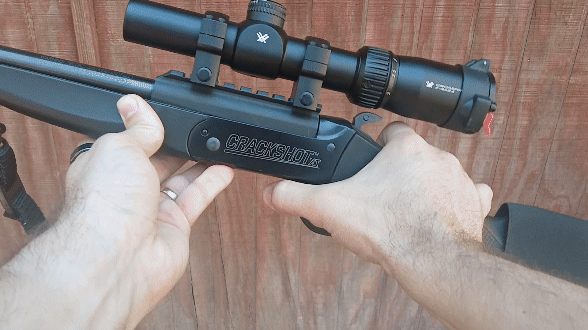Here’s a scenario most new hunters and gun owners have experienced.
You’re at the gun range when the friendly fellow at the neighboring bench offers to let you shoot his rifle. You happily agree, but when you sit down at the bench and get behind the gun, you realize that you don’t actually know how to operate the firearm. You know how your gun works, but you aren’t familiar enough with the different types of rifle actions to comfortably (and safely) shoot someone else’s gun.
If that slightly awkward sequence of events sounds familiar, you’ve come to the right place. We’ll cover the five most common types of rifle action, explain how they work, and include photos of each so you can see for yourself. That way, the next time you get a chance to shoot a new rifle, you can spend less time fiddling with the controls and more time sending lead downrange.
What Is a Rifle “Action”?
Before we get to the most common types of rifle actions, it will help to understand what an action is. Most basically, the action of a rifle is the mechanism that loads a cartridge, ignites the cartridge to fire the projectile, and removes a spent casing once all the powder has burned. These mechanisms can look different (as you’ll see), but they all perform this basic function: load, fire, unload.
Another term you should understand is “bolt.” The bolt is the part of the firearm that locks the cartridge in place and stops up the breech end of the gun as the propellant burns. In many actions, it also serves to eject a spent casing and load a new one.
Bolt Action
This is the most common kind of rifle action among hunters. It’s called a “bolt-action” because the user operates the bolt via a handle attached directly to the side of the bolt.
In most rifles of this ilk, users must first raise the handle to unlock the “locking lugs,” the protrusions on the bolt that lock into the receiver. Raising the bolt handle allows the bolt to be moved backwards and forwards inside the receiver. The user can then push the bolt forward to strip a cartridge from the magazine and load it into the chamber or, after firing, pull the bolt back to eject the spent casing.
Operating the bolt also cocks the striker or firing pin–either when the user opens or closes the bolt, depending on the rifle design. This puts the firing pin under spring tension, which is then released by the sear when the user pulls the trigger.
Many would also consider straight pull rifles like the Beretta BRX1 a subset of bolt action rifles. Straight pull rifles don’t require the user to raise and lower the bolt handle, but they still feature a handle that allows the user to slide the bolt forwards and backwards.
Advantages: Common, inexpensive, accurate, durable, strong, easy to handle
Disadvantages: Slower followup shots compared to other kinds of actions
Lever Action
Lever action rifles are among the most iconic in the U.S., and it’s easy to see how they were named. Instead of a handle attached to the side of the bolt, a lever action rifle features a looped lever underneath the action.

The lever isn’t attached directly to the bolt. Instead, it rotates on a pivot underneath the receiver and moves the bolt backwards and forwards with various kinds of internal linkage mechanisms. Pulling the lever down unlocks the bolt and pushes it to the rear, which ejects the spent casing and cocks the hammer. Pulling the lever back up pushes the bolt forward, strips another cartridge from the magazine, feeds it into the chamber, and locks the bolt so the gun is ready to fire.
Unlike bolt action rifles, which use top-fed magazines to load cartridges, most lever guns use a tubular magazine attached to the underside of the barrel. To load a lever action, look for either a plunger that can be removed from the end of the tube or a loading gate on the right side of the receiver.
Advantages: Quick shooting, lightweight, easy to handle
Disadvantages: Not as accurate, many can’t be loaded with high pressure cartridges, not many models available for bottleneck cartridges
Semi-Auto
Bolt actions and lever actions require the user to manipulate the bolt to load a cartridge and eject a spent casing. Semi-automatic rifles perform this function automatically with each pull of the trigger.
Most semi-auto rifles firing modern centerfire cartridges use the gas from the spent casing to push the bolt backwards, which ejects the casing. Then, a spring mechanism pushes the bolt forward again, which strips a new cartridge from the magazine, loads it into the chamber, and locks the lugs to the receiver. This action also resets the trigger mechanism, so the rifle is ready to fire again in a matter of seconds.

Semi-auto rifles are less common in the field than bolt and lever guns, but AR-pattern rifles are frequently used to hunt everything from pigs to elk. To load this type of rifle, a magazine loaded with cartridges is inserted into the mag well and secured. Then, to “charge” the gun, the user pulls back on the charging handle, which pulls the bolt and bolt carrier to the rear. Letting go of the charging handle releases the bolt and loads the first cartridge.
“Charging” a semi-auto is always the first step if you’re loading an empty rifle. This process simply inserts a cartridge into the chamber, at which point the trigger can be pulled and cartridges can be fired until the magazine is empty. The charging handle might look different on different types of semi-auto, but there will always be a way to do it.
Advantages: Fastest followup shots, lightweight, AR-type can be easily customized
Disadvantages: Often less accurate than bolt-action
Pump Action
You don’t see too many pump action rifles in the woods these days (RIP Remington 7600), but pump action shotguns are still extremely popular. Rather than a lever or a bolt handle, a pump action firearm (whether rifle or shotgun) allows the user to manipulate the bolt using a sliding mechanism attached to the forend of the gun. If you don’t see a bolt handle, lever, or charging handle on the firearm, but you do see an oversized forend, it’s likely a pump action.

The controls on pump action rifles are often similar to pump action shotguns, including a button that releases the action bar lock and allows the pump to slide freely. To load a pump action rifle, simply load the magazine with cartridges, insert it into the firearm, release the action bar lock, and cycle the action.
Pump action rifles have the advantage of being faster to reload than bolt actions, and some would argue they’re also faster than lever guns.
Advantages: Quick shooting, durable, strong
Disadvantages: Often less accurate than bolt-action, difficult to find, mostly used models available
Single-Shot
All of the rifles covered so far feature actions that load and unload multiple cartridges from a magazine. Single-shot firearms can only be loaded with one cartridge at a time, and the user must unload the spent casing and load a new cartridge to fire another round.
The two main types of single-shot rifles are break-action and falling block. Break-action rifles are much like break-action shotguns. The barrel and receiver rotate on a hinge, which exposes the breech and allows a cartridge to be loaded into it. The rifle is then closed and locked, and the user cocks the hammer and pulls the trigger to fire a round.

Falling block rifles look a bit like lever action rifles in that they feature a short lever underneath the receiver. But instead of sliding the bolt back and forth, the lever lowers a metal block that exposes the breech. The user loads a cartridge into the breech and closes the action by pulling the lever up and returning the breechblock to its original position. Some falling block rifles feature external hammers, but the most famous, the Ruger No. 1, uses a hammerless design that cocks an internal hammer when the block is lowered.
Advantages: Extremely strong, accurate, safe, simple, durable
Disadvantages: Slowest followup shots, not many models available
Last Shot
These aren’t all the rifle actions that exist, but they are the most common. It’s important to understand how they work so that if you ever have to handle an unfamiliar firearm, you can identify the type of action and unload it quickly and safely.
Learning about rifle actions also helps you understand the advantages and disadvantages of each. If you find yourself unable to take followup shots as quickly as you’d like, maybe a semi-auto or pump gun is worth a look. If your old lever gun isn’t accurate enough, it’s good to know that modern bolt guns tend to be more accurate.
Hunters have brought home thousands (probably millions) of pounds of meat with each type of action. Whatever action you choose (or are forced to use), the most important thing is to practice, practice, practice, and then get out in the field.
Read the full article here

